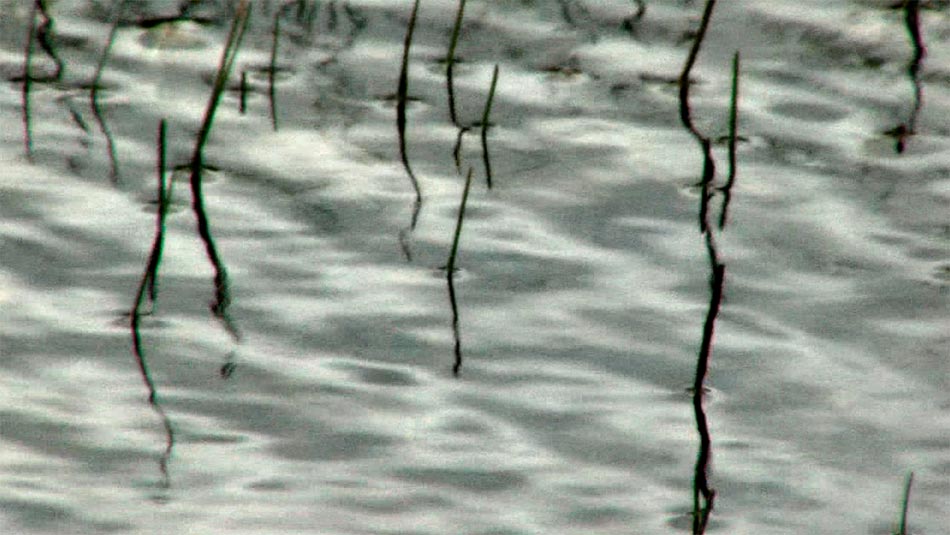LAMENT:

The borderlands of Scotland and England saw centuries of conflict that shaped our language as well as the landscape. The reivers, who presided over three centuries of cross-border cattle raids and bloody feuds, gave us the word bereaved, along with bereft, red-handed and blackmail. A rather villainous linguistic legacy, then. Even the phrase “against the grain” meaning to challenge conventional wisdom, is a reiver one: grayne being a family or clan grouping.
The reivers lost their grip after the 1603 Union of the Crowns, when James I and VI subdued them with proportionate brutality — many were hanged in Jedburgh without trial. Peace has long since turned their disputed lands into pretty villages and upland wilderness, but the violence of the past lingers in the memory.
This sense of history attracted the artist Richard Ashrowan, and the curator and critic Ileana Pintilie, who commissioned him to study the frontier that runs from the Solway to the Tweed, one of the oldest in Europe. This book is the result, along with an exhibition of Ashrowan’s photographs and films of Romania: shifting borders and conflicting identities remain live issues in eastern Europe.
Ashrowan’s images are always simple: fragments of landscape that in the words of Pintilie, search for “the meanings of place beyond appearances”. Sometimes they are intimate: a downy feather curling in grass by the Tweed or an eddy swirling in the remote Kershopefoot burn. Others bring a simplicity to sweeping landscapes: clouds rolling over the Solway’s muddy sands or mist blurring the tree line to abstraction.
Ashrowan lives just inside the Scottish side of the frontier. The Romans called it “the end of the world”, and William Camden’s Britannica in 1695 described the hills as “lean, hungry and waste”. In many places that has not altered. Ashrowan feels “perfectly at home” in all this bleakness. His 96-mile journey from west to east takes in a few points of human civilisation, but he much prefers the lonely and unsullied.
Not that he can be blamed for recoiling at Gretna, where a sign invokes visitors to “Shoppy, marry”. Watching the conveyor belt of couples enter and leave the old blacksmith’s shop-turned-wedding factory leaves him in a “deeply misanthropic and desolate mood”.
Carter Bar, the border crossing high in the Cheviots is more his sort of place, surrounded as it is by “dramatic hills and inhospitable moorland”. But a fast food van in the layby is less welcome. Motorists grab bacon rolls as they pose before the giant boulders on each side of the A68 saying Scotland or England. Ashrowan is gripped by an urgent need to flee the “interminable metalled road, with its endless stream of identical cars and sterile polystyrene cups”.
Fortunately for both Ashrowan and the reader, much of the border remains forlorn and consequently inspiring. The Hermitage, is one such location. The sinister castle “reeks of violence”, and no wonder. One former owner was said to have been boiled alive in a cauldron of molten lead by his disgruntled tenants. It was occupied by many famous and fearsome Borders families, including the Douglases and Buccleughs. James Hepburn, Earl of Bothwell, the lover, abductor and husband of Mary Queen of Scots was once its keeper. When he was knifed in a fight, she rode over 25 miles of wild country to be with him at the Hermitage.
The artist is fascinated by the Borders’ historic status as disputed land. Although we associate frontiers with conflict, they are also places where cultures meet and mix. They are alive with possibilities, as much contact zones as conflict zones. Ashrowan uses the word liminality, from limen, the Latin for threshold, to describe them. A liminal person is betwixt and between, and thus something of a detached outsider. This, suggests Ashrowan, is a powerful description of the borderers’ psychology.
When I made a similar journey more than 10 years ago, I was struck by the way some borderers celebrate their non-aligned identity. Yet, at the same time, many Scots living near the border retained a stronger sense of national identity than citizens close to the nation’s geographical heart. Their language is rich with the words of Burns and Hogg, which disappear when the road crosses into England. Sometimes, living on the edge forces communities to assume an identity that they cling to with a passion.
Ashrowan is definitely in the liminal camp. He often tells visitors he lives “in the middle of nowhere”. Clearly, that’s just how he likes it.
Lament: A Letter from the Anglo/Scots Borderline, by Richard Ashrowan is published by Nowhere Arts and available from ashrowan.com
Back to Lament.





